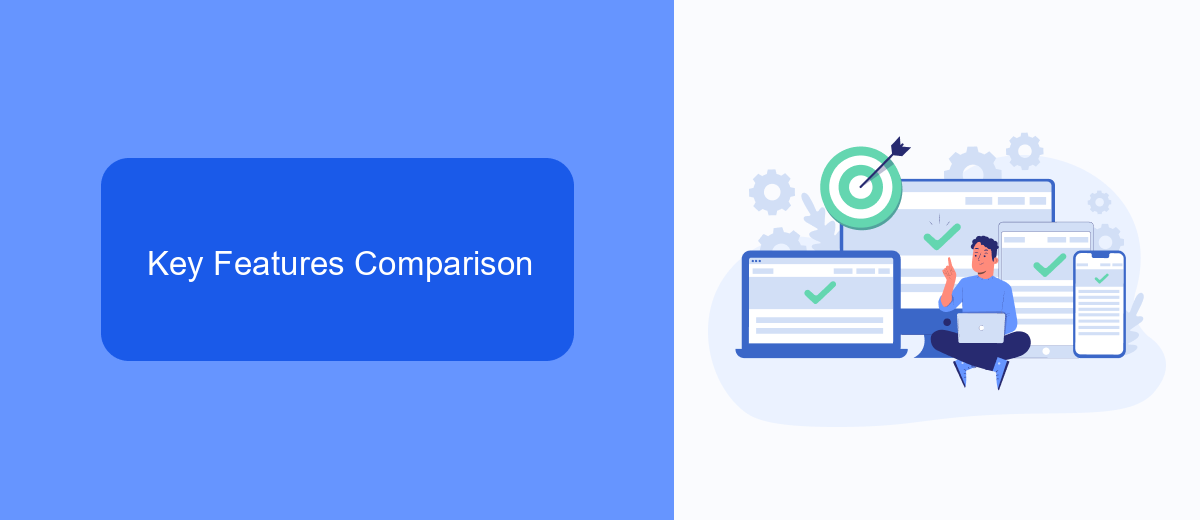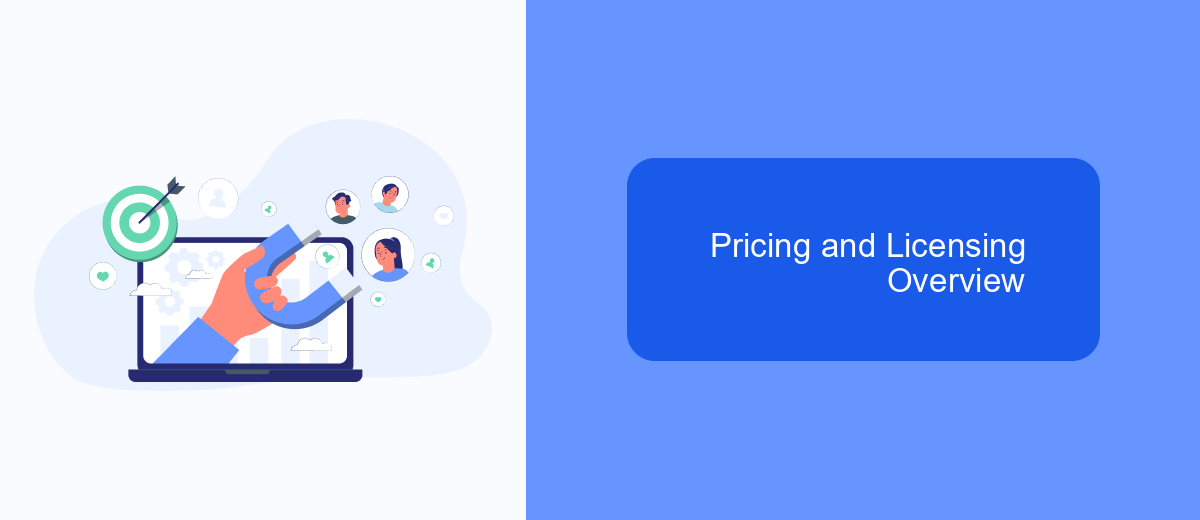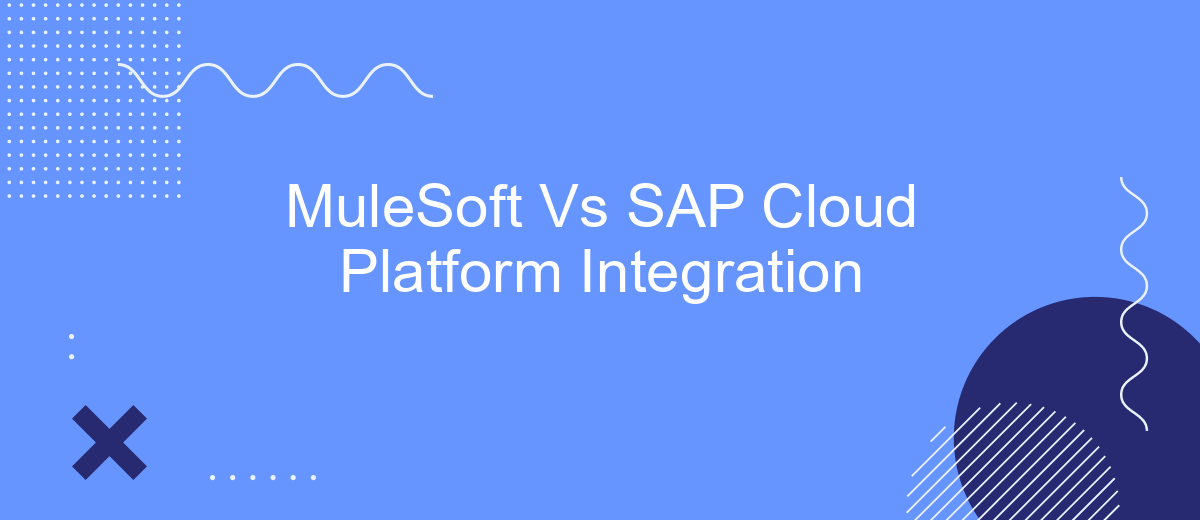In today's rapidly evolving digital landscape, choosing the right integration platform is crucial for business success. This article delves into a comparative analysis of MuleSoft and SAP Cloud Platform Integration, two leading solutions in the market. By examining their features, capabilities, and use cases, we aim to provide valuable insights to help organizations make informed decisions for their integration needs.
Introduction
In today's rapidly evolving digital landscape, businesses are increasingly relying on integration platforms to streamline operations, enhance productivity, and ensure seamless data flow across various applications. MuleSoft and SAP Cloud Platform Integration are two prominent solutions that cater to these needs, each offering unique features and capabilities.
- MuleSoft: Known for its robust API-led connectivity approach, MuleSoft provides a versatile platform for integrating applications, data, and devices across on-premises and cloud environments.
- SAP Cloud Platform Integration: This solution is tailored for SAP environments, offering pre-built integrations and tools to connect SAP and non-SAP applications efficiently.
- SaveMyLeads: A service that simplifies the integration process, SaveMyLeads allows businesses to automate lead data flow between various platforms, ensuring timely and accurate information transfer.
Choosing the right integration platform depends on various factors, including the specific requirements of your business, the existing IT infrastructure, and the desired level of customization. In this article, we will delve deeper into the features, advantages, and potential drawbacks of MuleSoft and SAP Cloud Platform Integration to help you make an informed decision.
Key Features Comparison

MuleSoft and SAP Cloud Platform Integration both offer robust solutions for connecting diverse applications and data sources. MuleSoft's Anypoint Platform provides a comprehensive suite of tools for API management, design, and deployment, making it easier to create and manage APIs. It also offers pre-built connectors for various systems, including Salesforce, SAP, and AWS, which significantly reduces development time. On the other hand, SAP Cloud Platform Integration excels in its seamless integration with other SAP systems, offering pre-configured integration packages and scenarios that simplify the integration process for SAP-centric environments.
Both platforms support real-time data processing and offer extensive monitoring and analytics capabilities. MuleSoft stands out with its flexible deployment options, including on-premises, cloud, and hybrid environments. SAP Cloud Platform Integration, however, provides a more streamlined experience for businesses already using SAP solutions, with native support for SAP's ecosystem. Additionally, services like SaveMyLeads can complement these platforms by automating lead management processes, ensuring that data flows seamlessly between marketing and sales applications, enhancing overall efficiency.
Integration Capabilities Analysis

When comparing MuleSoft and SAP Cloud Platform Integration, it's crucial to analyze their integration capabilities. Both platforms offer robust tools for connecting diverse systems, but they differ in their approach and features.
- Pre-built Connectors: MuleSoft provides a vast library of pre-built connectors for popular applications and services, reducing the time needed for custom development. SAP Cloud Platform Integration also offers pre-built connectors but is more focused on SAP ecosystem integrations.
- Customization: MuleSoft excels in customization, allowing developers to tailor integrations to specific business needs. SAP Cloud Platform Integration, while customizable, often requires deeper knowledge of SAP systems.
- Ease of Use: MuleSoft's Anypoint Platform is known for its user-friendly interface and drag-and-drop features, making it accessible for non-developers. SAP Cloud Platform Integration is more complex and may require specialized skills to navigate.
For businesses seeking a straightforward integration solution, services like SaveMyLeads can be invaluable. SaveMyLeads simplifies the process by offering automated workflows and integrations with popular CRM systems, complementing the capabilities of both MuleSoft and SAP Cloud Platform Integration.
Pricing and Licensing Overview

When comparing MuleSoft and SAP Cloud Platform Integration (CPI), pricing and licensing are crucial factors to consider. Both platforms offer flexible pricing models tailored to different business needs, but they have distinct approaches.
MuleSoft offers a subscription-based pricing model, which includes different tiers based on the number of applications and the volume of data processed. This allows businesses to scale their usage and costs according to their growth. On the other hand, SAP CPI provides a consumption-based pricing model, where costs are determined by the number of messages processed, making it suitable for businesses with varying integration needs.
- MuleSoft: Subscription-based pricing with tiered options.
- SAP CPI: Consumption-based pricing based on message volume.
- SaveMyLeads: Fixed monthly fee for unlimited integrations.
While both MuleSoft and SAP CPI offer robust integration capabilities, SaveMyLeads provides a straightforward and cost-effective alternative for businesses looking for a simpler pricing structure. With a fixed monthly fee, SaveMyLeads allows unlimited integrations, making it an attractive option for companies seeking predictable costs and easy scalability.
Conclusion
In conclusion, both MuleSoft and SAP Cloud Platform Integration offer robust solutions for enterprise integration needs, each with its own set of strengths. MuleSoft excels in providing a comprehensive API-led connectivity approach, making it easier for businesses to connect disparate systems and data sources. On the other hand, SAP Cloud Platform Integration is highly effective for organizations already leveraging SAP ecosystems, offering seamless integration with SAP applications and services.
Choosing between MuleSoft and SAP Cloud Platform Integration largely depends on your specific business requirements and existing IT infrastructure. For those looking for a versatile, API-centric solution, MuleSoft is an excellent choice. Conversely, if your organization is deeply integrated with SAP products, SAP Cloud Platform Integration may offer more streamlined and efficient integration capabilities. Additionally, tools like SaveMyLeads can further simplify the integration process by automating data transfers between various platforms, enhancing the overall efficiency and effectiveness of your integration strategy.
FAQ
What are the main differences between MuleSoft and SAP Cloud Platform Integration?
Which platform is more suitable for integrating non-SAP applications?
How do MuleSoft and SAP CPI handle API management?
What are the costs associated with using MuleSoft vs. SAP CPI?
Is there a service to help with the automation and integration setup for these platforms?
Personalized responses to new clients from Facebook/Instagram. Receiving data on new orders in real time. Prompt delivery of information to all employees who are involved in lead processing. All this can be done automatically. With the SaveMyLeads service, you will be able to easily create integrations for Facebook Lead Ads and implement automation. Set up the integration once and let it do the chores every day.
